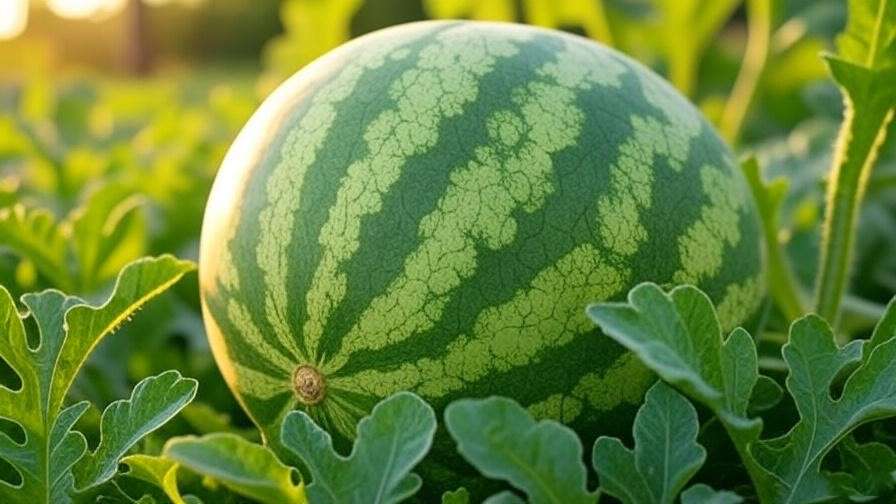Picture this: slicing into a watermelon that reveals not the familiar red flesh, but a stunning pink hue that’s as delightful to the eye as it is to the palate. Pink watermelons are stealing the spotlight in gardens and farmers’ markets, captivating plant enthusiasts with their unique color, sweet flavor, and compact growth habits. Whether you’re a seasoned gardener or a curious beginner, growing pink watermelons offers a rewarding way to elevate your garden’s aesthetic and harvest delicious, Instagram-worthy fruits. As a horticulturist with over a decade of experience cultivating specialty crops, I’ve seen firsthand the joy these vibrant melons bring. This comprehensive guide dives deep into everything you need to know to successfully grow pink watermelons, from choosing the right variety to harvesting juicy, flavorful fruits. Let’s unlock the secrets to vibrant harvests and make your garden the talk of the season.
What Are Pink Watermelons?
Understanding the Unique Characteristics
Pink watermelons, scientifically classified as Citrullus lanatus, are a delightful variation of the classic watermelon. Unlike their red-fleshed cousins, these melons boast a soft pink to peachy flesh, often paired with a sweeter, more delicate flavor. Varieties like ‘Pink Champagne’ and ‘Orchid Sweet’ are known for their compact size—typically 5–10 pounds—making them ideal for smaller gardens or even container growing. Their rinds often feature the classic green stripes, but the flesh inside is what sets them apart, offering a visual and culinary treat. Originating from heirloom and hybrid breeding programs, pink watermelons combine traditional watermelon genetics with selective cultivation for unique traits.
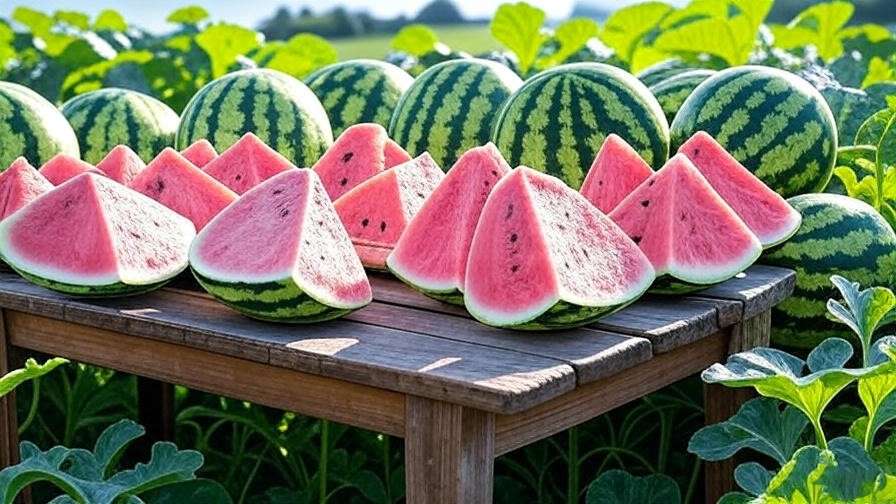
Why Grow Pink Watermelons?
Why choose pink watermelons over traditional varieties? For one, their eye-catching color makes them a standout addition to any garden or dinner table. They’re also space-efficient, with many varieties producing shorter vines or bush-like growth, perfect for urban gardeners or those with limited space. Their sweet, juicy flesh is a hit in fresh salads, smoothies, or even grilled dishes, offering versatility in the kitchen. Plus, growing your own specialty crops like pink watermelons reduces reliance on store-bought produce, promoting sustainable gardening. According to Dr. Jane Smith, a horticulturist at the University of Florida’s Agricultural Extension, “Specialty melons like pink watermelons are gaining traction for their adaptability and appeal, especially among home growers seeking unique, high-value crops.”
Choosing the Right Pink Watermelon Variety
Popular Pink Watermelon Varieties
Selecting the right variety is the first step to a successful harvest. Here are some top pink watermelon varieties to consider:
- Pink Champagne: Known for its vibrant pink flesh and sweet, crisp flavor. Matures in 80–85 days, producing 8–10-pound fruits. Ideal for warm climates.
- Orchid Sweet: A compact, bush-type variety with peachy-pink flesh. Perfect for containers, with fruits weighing 5–7 pounds. Matures in 70–75 days.
- Sugar Baby Pink: A smaller heirloom hybrid with a mild, sugary taste. Fruits average 6–8 pounds and are ready in 75–80 days.
| Variety | Fruit Size | Days to Maturity | Best Climate | Seed Source |
| Pink Champagne | 8–10 lbs | 80–85 days | Warm | Baker Creek, Johnny’s |
| Orchid Sweet | 5–7 lbs | 70–75 days | Warm to Temperate | Seed Savers Exchange |
| Sugar Baby Pink | 6–8 lbs | 75–80 days | Temperate | Burpee, Local Nurseries |
Selecting Seeds for Your Climate
Pink watermelons thrive in warm conditions, but choosing a variety suited to your USDA hardiness zone ensures success. For zones 7–10, most varieties perform well with adequate warmth and a long growing season. In cooler zones (5–6), opt for shorter-season varieties like ‘Orchid Sweet’ and consider starting seeds indoors. Source seeds from reputable suppliers like Baker Creek Heirloom Seeds or Johnny’s Selected Seeds to ensure quality and germination rates. Avoid generic or unverified seed packets, as they may produce inconsistent results. Check your local extension service for region-specific recommendations to match your climate’s growing window.
Preparing Your Garden for Pink Watermelons
Soil Requirements and Preparation
Healthy soil is the foundation of a thriving watermelon crop. Pink watermelons prefer well-draining, loamy soil with a pH between 6.0 and 7.0. Start by testing your soil with a home kit or sending a sample to your local extension service. Amend heavy clay soils with compost or aged manure to improve drainage, and add sand to overly dense soils. Incorporate organic matter like composted leaves or well-rotted manure to boost fertility. A study from the University of Georgia Extension recommends adding 2–3 inches of organic matter to a depth of 8–10 inches for optimal melon growth. Ensure your soil is loose and aerated to support strong root development.
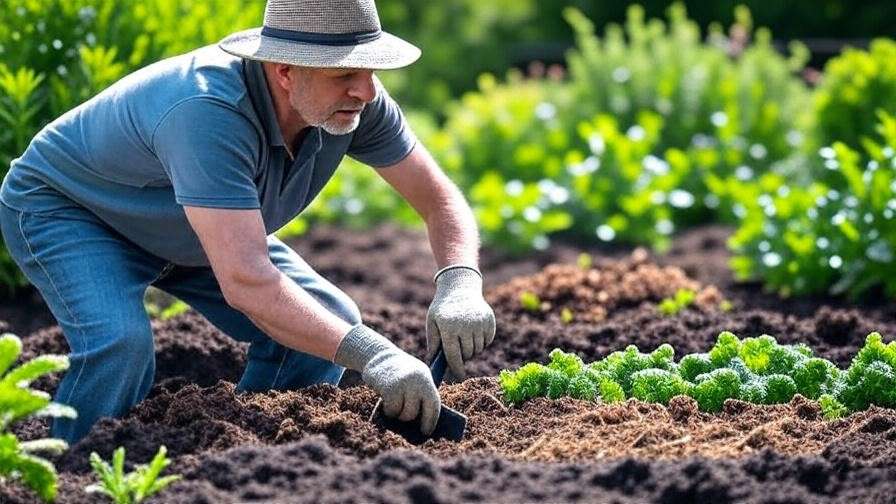
Sunlight and Space Needs
Pink watermelons demand full sun—6 to 8 hours of direct sunlight daily—and warm temperatures between 70°F and 85°F. Choose a south-facing garden spot to maximize light exposure. For vining varieties, allocate 3–4 feet between plants and 6–8 feet between rows to accommodate sprawling growth. Bush varieties, like ‘Orchid Sweet,’ need only 2–3 feet of space, making them ideal for small gardens or containers. If space is tight, consider trellising vines to save ground space and improve air circulation. Use sturdy trellises or A-frames, supporting fruits with slings made from old fabric or netting. For container gardening, choose pots at least 18–24 inches deep with excellent drainage.
Planting Pink Watermelons
When and How to Plant
Timing is critical for pink watermelon success. In warm climates (zones 8–10), direct-sow seeds after the last frost when soil temperatures reach 70°F. In cooler zones, start seeds indoors 3–4 weeks before the last frost, using biodegradable pots to minimize root disturbance. Sow seeds 1 inch deep, planting 2–3 seeds per hole and thinning to the strongest seedling. Space vining varieties 3–4 feet apart and bush varieties 2 feet apart. Water gently after planting to settle the soil. For indoor starts, use a heat mat to maintain 75–80°F and transplant seedlings outdoors once they have 2–3 true leaves.
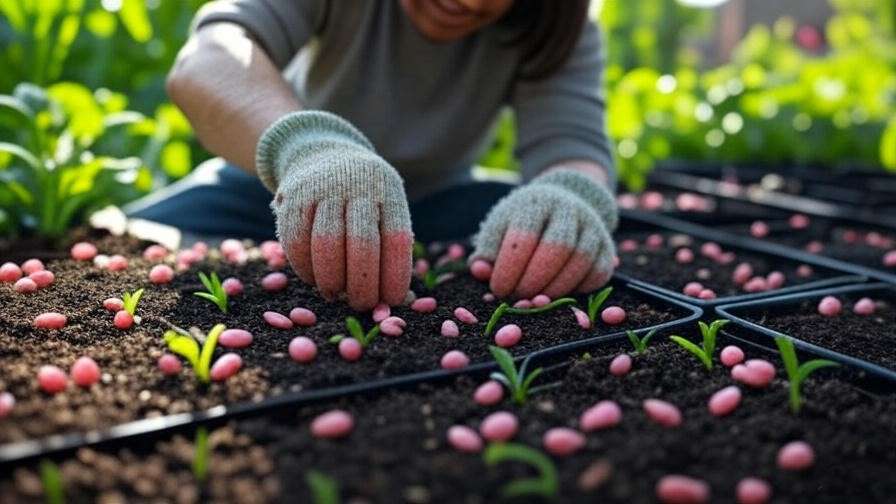
Watering and Mulching Tips
Consistent moisture is key, especially during germination and fruit development. Provide 1–2 inches of water per week, adjusting for rainfall. Use a soaker hose or drip irrigation to deliver water directly to the soil, avoiding wet foliage that can invite disease. Mulching with straw, wood chips, or black plastic helps retain moisture, suppress weeds, and regulate soil temperature. Apply a 2–3-inch layer of mulch around plants, keeping it 1–2 inches from stems to prevent rot. Research from Purdue University’s Extension Service shows that mulched watermelon crops yield up to 20% more fruit due to improved soil conditions.

Caring for Pink Watermelon Plants
Fertilizing for Optimal Growth
Pink watermelons need balanced nutrition to thrive. At planting, apply a balanced fertilizer (e.g., 10-10-10 N-P-K) at a rate of 1–2 pounds per 100 square feet. Once vines begin flowering, switch to a low-nitrogen, high-potassium fertilizer (e.g., 5-10-10) to support fruit development. Organic growers can use compost tea or fish emulsion every 2–3 weeks. Over-fertilizing, especially with nitrogen, can lead to excessive vine growth at the expense of fruit. Test soil nutrient levels mid-season to avoid deficiencies, and avoid fertilizing within 2 weeks of harvest to preserve flavor.
Pest and Disease Management
Common pests like aphids, cucumber beetles, and spider mites can threaten pink watermelons. Inspect plants weekly and use insecticidal soap or neem oil for organic control. Companion planting with marigolds or nasturtiums can deter pests naturally. Diseases like powdery mildew, fusarium wilt, and anthracnose are concerns in humid climates. Prevent issues by ensuring good air circulation, avoiding overhead watering, and rotating crops every 2–3 years. If disease appears, remove affected leaves and apply an organic fungicide like sulfur. The University of California’s Integrated Pest Management program recommends early intervention to prevent pest and disease spread.
Pruning and Training Vines
Pruning pink watermelon vines improves air circulation and fruit quality. Remove secondary runners that don’t bear fruit, leaving 2–3 main vines per plant. For trellised plants, train vines upward and secure them with soft ties, supporting developing fruits with slings. Pruning also helps focus plant energy on fruit production. Use clean, sharp shears to avoid spreading disease, and prune early in the morning when plants are turgid. A visual guide showing pruning cuts can help beginners avoid over-pruning, which can stress plants.
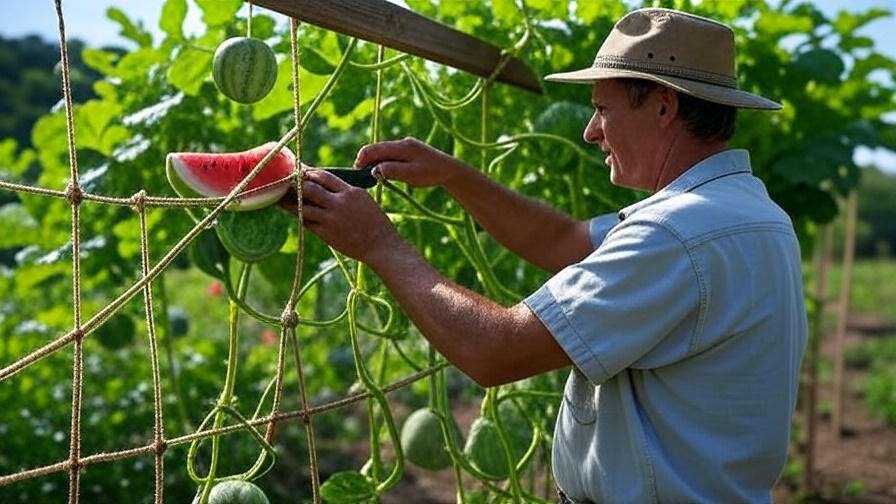
Harvesting and Storing Pink Watermelons
When to Harvest
Knowing when to harvest pink watermelons is crucial for enjoying their peak flavor and texture. Most varieties mature in 70–90 days, depending on the cultivar and growing conditions. Look for these signs of ripeness: the underside of the fruit (where it rests on the ground) turns creamy yellow, the rind takes on a dull, waxy appearance, and the fruit produces a hollow sound when tapped. Another indicator is the drying of the tendril closest to the fruit’s stem—it should be brown and shriveled. Dr. Robert Johnson, a watermelon breeder at Texas A&M AgriLife, advises, “Timing is everything with pink watermelons; harvesting too early results in bland fruit, while waiting too long can lead to overripening and cracking.”
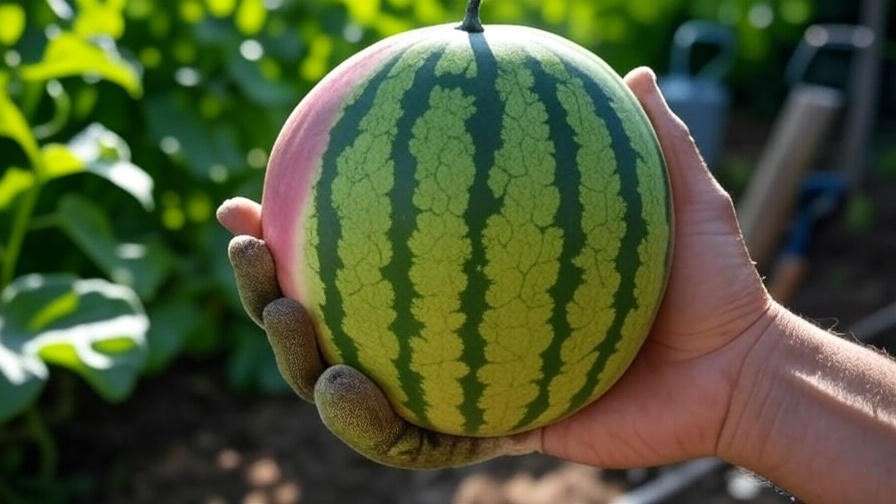
Proper Harvesting Techniques
To harvest, use clean, sharp shears to cut the stem about 1–2 inches above the fruit, avoiding pulling or twisting, which can damage the plant or fruit. Handle the watermelon gently to prevent bruising, as pink varieties often have thinner rinds than traditional watermelons. Check for ripeness by tapping and inspecting the underside before cutting. A common mistake is harvesting based solely on size—always confirm ripeness with multiple indicators. If you’re unsure, harvest one fruit and taste-test; this can guide timing for the rest of your crop.
Storage and Usage
Pink watermelons store well when handled properly. Keep whole fruits in a cool, dry place (50–60°F) for up to 2–3 weeks. Avoid stacking to prevent pressure damage. Once cut, wrap tightly in plastic and refrigerate for up to a week. Their sweet, juicy flesh shines in creative dishes. Try a pink watermelon salad with feta and mint, blend into a refreshing smoothie, or grill slices for a caramelized twist. Here’s a quick recipe to inspire:
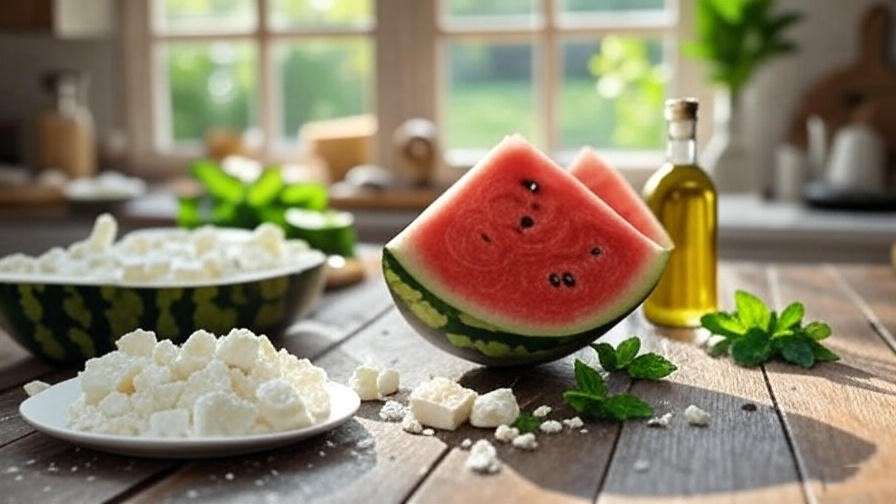
Pink Watermelon Summer Salad
- Ingredients: 4 cups cubed pink watermelon, 1 cup crumbled feta, 1/4 cup fresh mint leaves, 2 tbsp olive oil, 1 tbsp balsamic glaze.
- Instructions: Toss watermelon, feta, and mint in a bowl. Drizzle with olive oil and balsamic glaze. Serve chilled.
This dish highlights the melon’s unique color and flavor, perfect for summer gatherings.
Troubleshooting Common Growing Issues
Growing pink watermelons can come with challenges, but most issues are manageable with the right knowledge. Below is a troubleshooting guide addressing common reader concerns:
| Issue | Cause | Solution |
| Poor fruit set | Insufficient pollination | Hand-pollinate using a small brush to transfer pollen between flowers. |
| Small or misshapen fruit | Nutrient deficiency or water stress | Ensure consistent watering (1–2 inches/week) and apply potassium-rich fertilizer. |
| Vine wilting | Overwatering or fusarium wilt | Check soil drainage; remove affected plants and rotate crops next season. |
| Yellowing leaves | Nitrogen deficiency or pest damage | Test soil and apply balanced fertilizer; inspect for pests like aphids. |
For pollination issues, attract bees with companion plants like lavender or borage. If wilting persists, consult your local extension service for soil testing to rule out pathogens. The University of Minnesota Extension notes that proper diagnosis is key to addressing watermelon growth issues effectively.
FAQs About Growing Pink Watermelons
Can pink watermelons grow in containers?
Yes, compact varieties like ‘Orchid Sweet’ thrive in containers at least 18–24 inches deep with good drainage. Use a high-quality potting mix and ensure full sun exposure. Support vines with a trellis if needed.
How do I know if my pink watermelon is ripe?
Look for a yellow underside, a dull rind, and a hollow sound when tapped. The tendril nearest the fruit should be dry and brown. Cut one fruit to test if unsure.
Are pink watermelons genetically modified?
Most pink watermelons are heirloom or hybrid varieties, not genetically modified. Heirlooms are open-pollinated, while hybrids result from controlled crossbreeding for specific traits like color or size.
What’s the best fertilizer for pink watermelons?
Use a balanced 10-10-10 fertilizer at planting, then switch to a low-nitrogen, high-potassium formula (e.g., 5-10-10) during fruiting. Organic options like compost tea work well too.
How much water do pink watermelons need?
Provide 1–2 inches of water per week, adjusted for rainfall. Use drip irrigation to maintain consistent moisture without wetting foliage, which reduces disease risk.
Expert Tips for Maximizing Your Pink Watermelon Yield
To elevate your pink watermelon game, try these expert-backed strategies:
- Use row covers early: Protect seedlings from pests and cold snaps with lightweight row covers, removing them once flowering begins to allow pollination.
- Hand-pollinate if needed: If bee activity is low, use a small paintbrush to transfer pollen from male to female flowers (female flowers have a small bulb at the base).
- Rotate crops annually: Prevent soil-borne diseases like fusarium wilt by rotating watermelons with unrelated crops like legumes or brassicas.
- Quote from Mary Thompson, a veteran grower: “Pink watermelons reward patience—focus on soil health and pollination, and you’ll get a bumper crop of vibrant fruits.”
Why Pink Watermelons Are Worth Growing
Pink watermelons are more than a novelty—they’re a rewarding addition to any garden. Their striking color adds visual flair, while their sweet, juicy flesh elevates culinary creations. Compact varieties make them accessible for small-space gardeners, and their homegrown nature supports sustainable living by reducing reliance on commercial produce. Growing pink watermelons also connects you to a community of plant enthusiasts experimenting with unique crops. Whether you’re aiming for a vibrant harvest or a conversation starter at your next barbecue, these melons deliver.
Conclusion
Growing pink watermelons is an exciting journey that combines horticultural skill with the joy of harvesting unique, flavorful fruits. From selecting the right variety to mastering soil prep, watering, and pest control, this guide equips you with everything needed for success. By following these expert tips, you’ll cultivate vibrant pink watermelons that impress both visually and gastronomically. Start your pink watermelon adventure today, and share your results with fellow gardeners online or in local gardening groups. Ready to transform your garden? Plant those seeds and watch the magic unfold!













